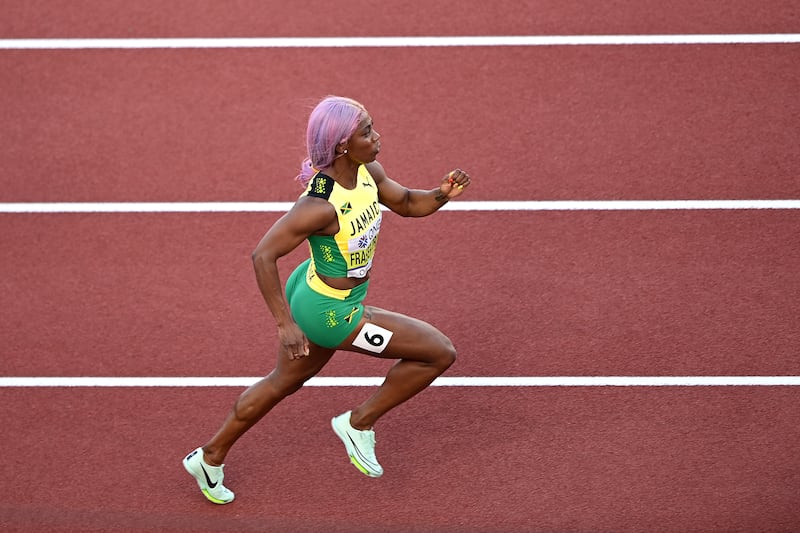It’s been eight months since Sara Björk Gunnarsdóttir held her newborn baby in her arms, probably wondering where her career would go next. Iceland women’s national team had the women’s Euros on their minds, but Sara was taking her recovery day by day. Sara was lucky there were other mothers on the Iceland team to bounce ideas off of. Of the current Iceland squad, five in total are mothers. Plenty of mentors and lots of sound advice. When would she stop working out? What type of trainer would take her on? Would she ever reach the highs in her career she was incredibly used to?
Pregnancy and childbirth in women’s sports is still pretty taboo. Only three years ago, US track star Allyson Felix went public about how Nike didn’t want to pay her fully due to getting pregnant. Felix, who also discovered she had preeclampsia during an appointment at eight months, told how Nike wanted to pay her 70 per cent less than what was in her contract and wouldn’t include maternity cover.
But 2019 accidentally became the Dream Maternity year. Allyson Felix would make history, breaking Usain Bolt’s record for the most world championship titles ever by earning her 12th gold in the mixed 4x400 metre relay. She also had the fastest split in the prelims. Nia Ali and Jamaica’s Shelly-Ann Fraser-Pryce all won world championship gold after becoming mothers: Ali in the 100m hurdles, 16 months post-partum; Fraser-Pryce in the 100m, two years post-partum. Serena Williams also made four Grand Slam finals two years after her complicated childbirth.

But still, hurdles remained, especially in individual sports where sponsors and funding is dependent on sporting accolades. Getting pregnant was not seen as a sporting accolade but as a hindrance to female athletes.
Team sports also failed some mothers when covering maternity costs and ensuring an athlete could avail of services while still pregnant. WNBA All-Star Skylar Diggins-Smith in 2018 announced she was pregnant and had given birth during the offseason. In that season, she’d finished in the league’s top 15 for points, assists, steals and minutes per game. Diggins-Smith had been pregnant during that season and refused to tell anyone due to fears of not being supported.
Flash forward two years later, in 2020, and the WNBA announced a new Collective Bargaining Agreement that meant maternity leave would be increased and players would have better protection while not playing. The athletes are now receiving an average compensation of nearly $130,000 – the first time the average will be in the six figures range. For context, NBA players average more than $7 million each year. There are also added childcare arrangements. Parents in the WNBA now have two-bedroom apartments guaranteed by the league and a childcare stipend of $5,000.
In contrast, it took the NWSL in America until this year to negotiate proper maternity leave. Under the new policy, a player going on maternity leave will be paid 100 per cent of her weekly wage and any other compensation and benefits for the first 14 weeks. Admittedly, resources in the WNBA are greater, but the gender pay gap is reinforced by the fact that maternity leave is still fragile across all job sectors globally.
Coming closer to home, the emergence of mothers within Gaelic games is still relatively new. On Saturday, new mother Louise Galvin sprinted off the pitch to breastfeed her son and discussed it openly during her post-match interview with Off The Ball. Mothers in Gaelic games are relatively new, with it estimated that less than 1 per cent of camogie players and ladies footballers are mothers. And yet, mothers are taking to Gaelic games quickly, with the rise of the Mothers&Others program that encourages mothers out for the recreational side of the sport.
From a high-performance perspective, Fionnuala McCormack continues to go up in her career after having her baby in 2018. Understanding that every minute mattered has brought Fionnuala into a training smarter ideology. As every mother reading this would know, time is pretty much of the essence.
There’s still a long way to go in bridging that gap, and part of it is understanding that getting pregnant during your career isn’t the end of the world. In fact, if sociological barriers were removed and a precedent was set, it would make things easier. We’ve seen Alex Morgan, Louise Galvin, plenty of WNBA stars, Fionnuala McCormack and many others get pregnant and thrive afterwards. The athlete and the child shouldn’t have to adapt, but the support and environment around them should.
The other aspect is research. Understanding every woman body is different and reacts differently is crucial. Not one pregnancy is the same as the next. Fortunately, the ‘women aren’t small men’ mould seems to be cracking. Let’s ensure no woman athlete is left behind when devising new strategies.

















